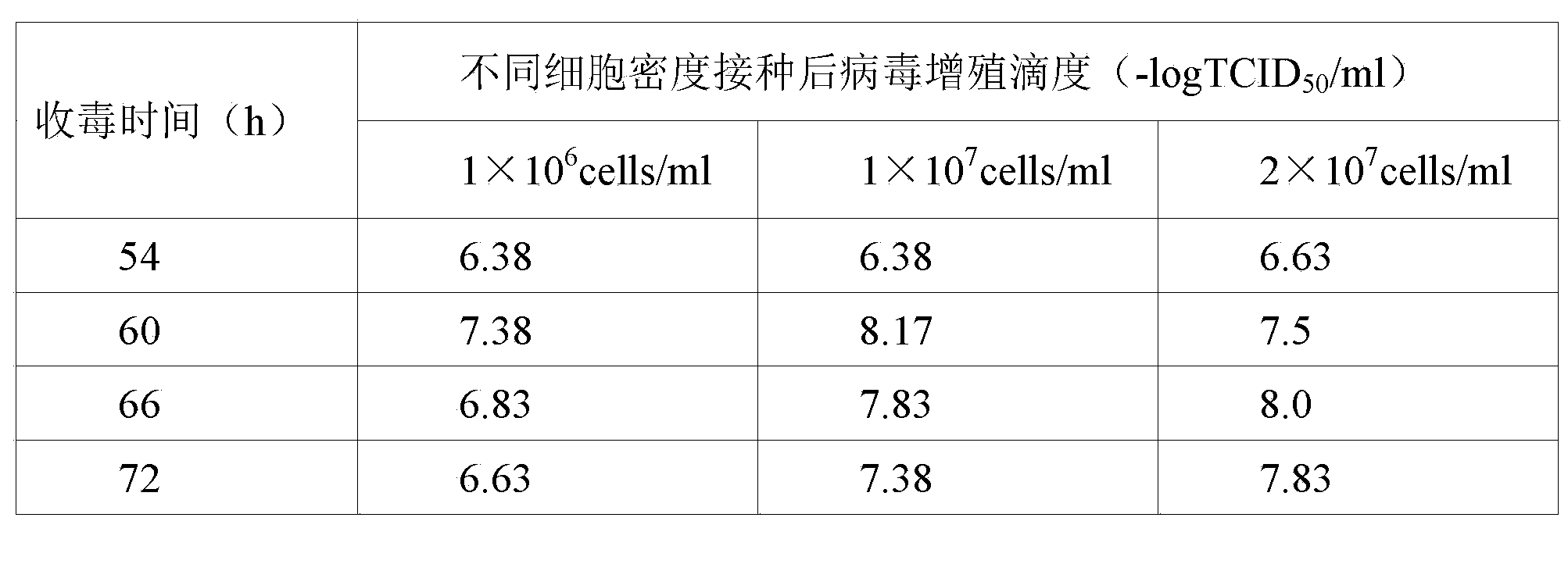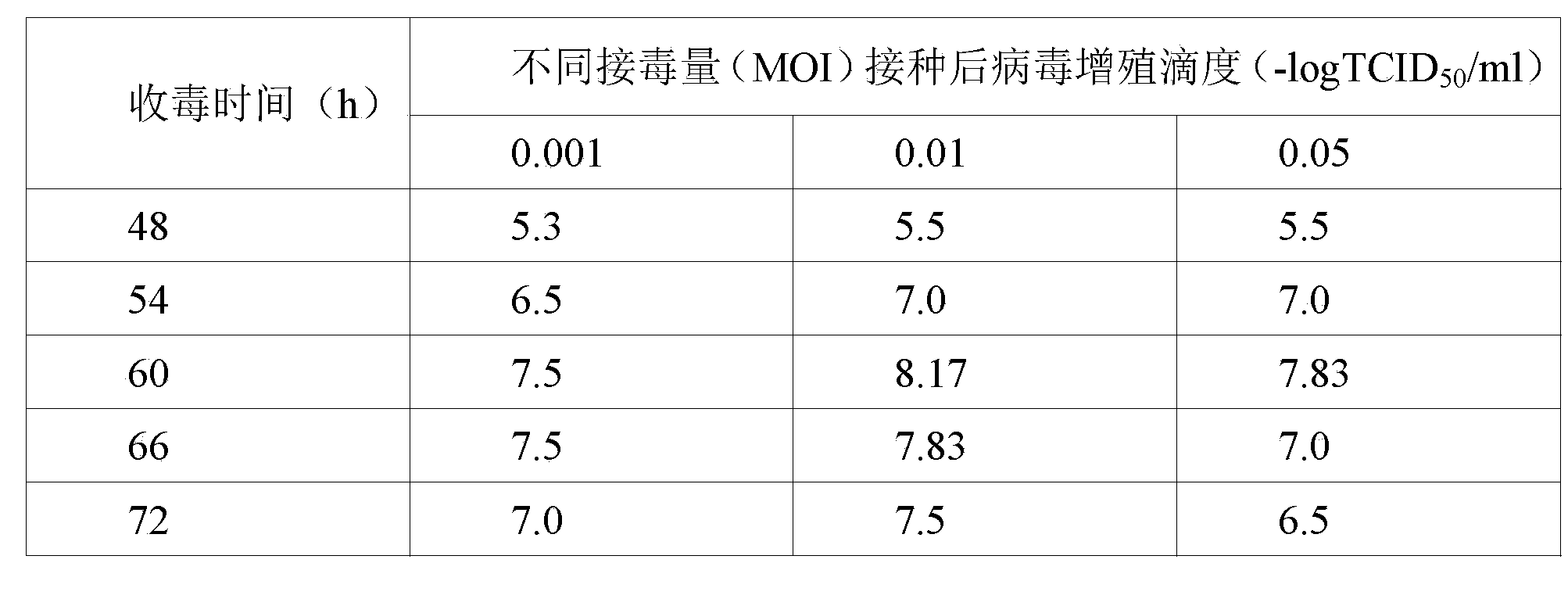Method for producing porcine parvovirus inactivated vaccine by using torrent bioreactor
A bioreactor, parvovirus technology, applied in biochemical equipment and methods, microorganisms, antiviral agents, etc., can solve the problems of unstable product quality, low vaccine production efficiency, and easily contaminated products, and achieve rapid expansion of production. Scale, beneficial to continuous reproduction, easy cell growth and effect of nutrient supply
- Summary
- Abstract
- Description
- Claims
- Application Information
AI Technical Summary
Problems solved by technology
Method used
Image
Examples
Embodiment 1
[0025] Embodiment 1: Cultivate IBRS-2 cells in a torrent bioreactor
[0027] Take out the IBRS-2 cell cryopreservation tube from the liquid nitrogen tank, quickly put it into 37°C water, shake it constantly to thaw it quickly, use a pipette to separate the cell suspension, put it into a sterile centrifuge tube, and add 9ml of cell growth centrifuge at 1000rpm for 10 minutes, discard the supernatant, add cell culture medium (containing 10% newborn bovine serum) to suspend the cells, transfer them to a disposable cell culture bottle, and store at 37°C 5% CO 2 Cultivate in a constant temperature incubator, replace the cell growth medium once after 6 hours, and continue to cultivate.
[0028] 2. Cell passage
[0029] Take a well-grown IBRS-2 cell monolayer, discard the medium, wash twice with PBS, add an appropriate amount of trypsin digestion solution, and place it flat for about 2 minutes to observe the cell digestion. If the cell layer is blurred, d...
Embodiment 2
[0035] Example 2: Cultivation of Porcine Parvovirus Cells in a Rapid Flow Bioreactor
[0036] 1. Preparation of porcine parvovirus seed virus
[0037] First transfer the IBRS-2 cells to the bottle for passage, and when the cells grow into a single layer, discard the culture medium, inoculate the cells with the porcine parvovirus CP-99 strain, the inoculation dose is 0.01MOI, and replace the maintenance solution with 2% serum after inoculation Continue to cultivate. Harvest the virus liquid when the cell lesion reaches more than 80%, and carry out virus titer and sterility test on the harvested virus liquid, and the TCID of the virus liquid 50 ≥ 10 6.5 TCID 50 / ml, if the sterility test is qualified, it can be used as a seed virus for production.
[0038] 2. Bioreactor cells were inoculated with porcine parvovirus
[0039] When the cells in the torrent bioreactor were continuously cultured for 5 days and the measured glucose consumption reached a stable level, the cell den...
Embodiment 3
[0043] Example 3: Optimization test of PPV proliferation conditions in AMP AP20C torrent bioreactor
[0044] 1. The effect of the number of cells inoculated on the proliferation of PPV
[0045] Three groups (groups A, B and C) were selected for the experiment with different inoculum volumes of cells, which were 1×10 6 cells / ml, 1×10 7 cells / ml, 2×10 7 cells / ml, the virus fluid was harvested at 54h, 60h, 66h, and 72h after virus inoculation, and the virus titer was determined to study the effect of the number of cells inoculated on the proliferation of PPV.
[0046] Experimental data:
[0047] Table 1 Effect of different cell densities on PPV proliferation
[0048]
[0049] The experimental results showed that the virus liquid harvested after 60 hours of virus inoculation had higher toxicity, and the cell density was 1×10 7 When cells / ml is lower, the virus liquid has a higher toxicity.
[0050] 2. Influence of poisoning dose on PPV proliferation conditions
[0051] T...
PUM
 Login to View More
Login to View More Abstract
Description
Claims
Application Information
 Login to View More
Login to View More - R&D
- Intellectual Property
- Life Sciences
- Materials
- Tech Scout
- Unparalleled Data Quality
- Higher Quality Content
- 60% Fewer Hallucinations
Browse by: Latest US Patents, China's latest patents, Technical Efficacy Thesaurus, Application Domain, Technology Topic, Popular Technical Reports.
© 2025 PatSnap. All rights reserved.Legal|Privacy policy|Modern Slavery Act Transparency Statement|Sitemap|About US| Contact US: help@patsnap.com



